With our knowledge and your skills, fluffy ruffle fern care was never easier. Today we’re bringing an ultimate care guide for your new plant.
Now that you find a perfect spot for it in your home, it’s time to learn how to take care of it. Below, you’ll find important information about fluffy ruffle fern care.
About Fluffy Ruffles Fern Features

The fluffy ruffle fern (Nephrolepis exaltata) is a perennial fern from the family Nephrolepidaceae. It grows to 2 feet. The base is dark brown. Sterile and fertile shoots are different. It’s a great plant for a hanging basket.
It is grown as an ornamental plant, propagated by spores or division. There are significant forms in horticulture: ‘Crispa’ – has wrinkled leaves ‘Cristata’ – leaves are distinctly wrinkled ‘Purpurascens’ – shoots in spring are reddish-bronze to purple ‘Undulata’ – leaves are wavy-edged.
When And Where Was Fluffy Ruffle Fern Found
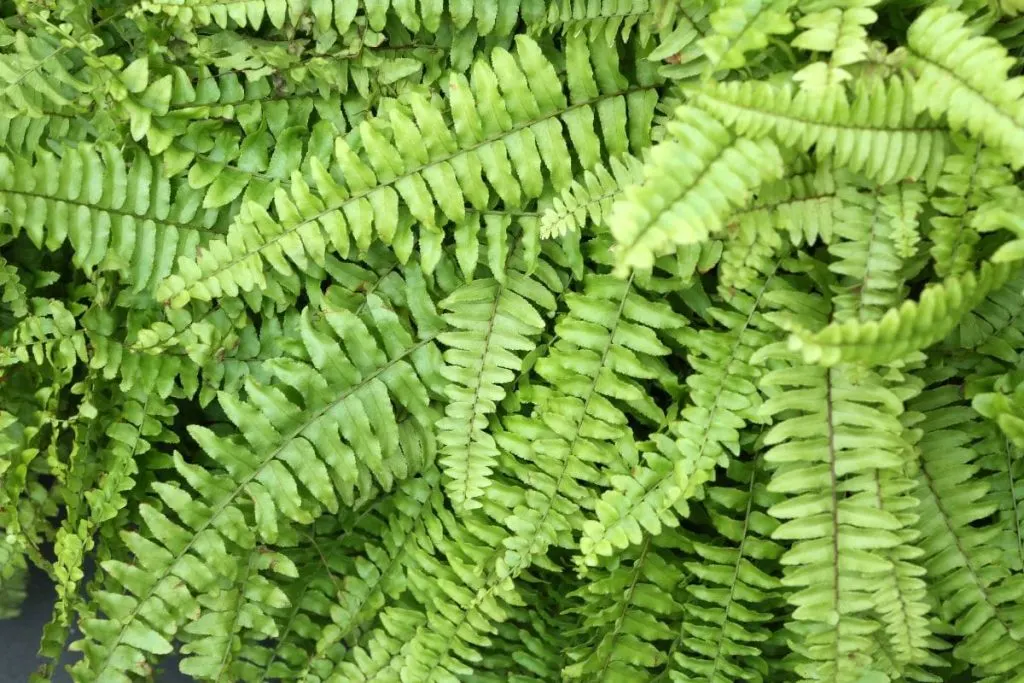
Although it has existed for millions of years as one of the oldest plants in the world, the attractiveness, and beauty of ferns are always rediscovered. Many species of ferns are known, and among the most famous is the house fern.
This ornamental houseplant captivates with its exotic appearance and thin, fluffy light green leaves that fall like waterfalls.
The natural habitat of ferns is the jungle, ie tropical and subtropical areas. And despite the fact that it requires specific conditions to grow, flourish and survive, this delicate plant with proper care and attention can survive the harsh winter.
In addition to beautifying your everyday life, house ferns will also help you sleep better. Namely, this popular houseplant is rich in essential oils, flavonoids, and other beneficial substances that have a calming effect on the nervous system.
A charming green “ruffle” can help you cope with the effects of stress more easily. And as a result, you will fall asleep more easily.
Watering Schedule For Fluffy Ruffle Fern
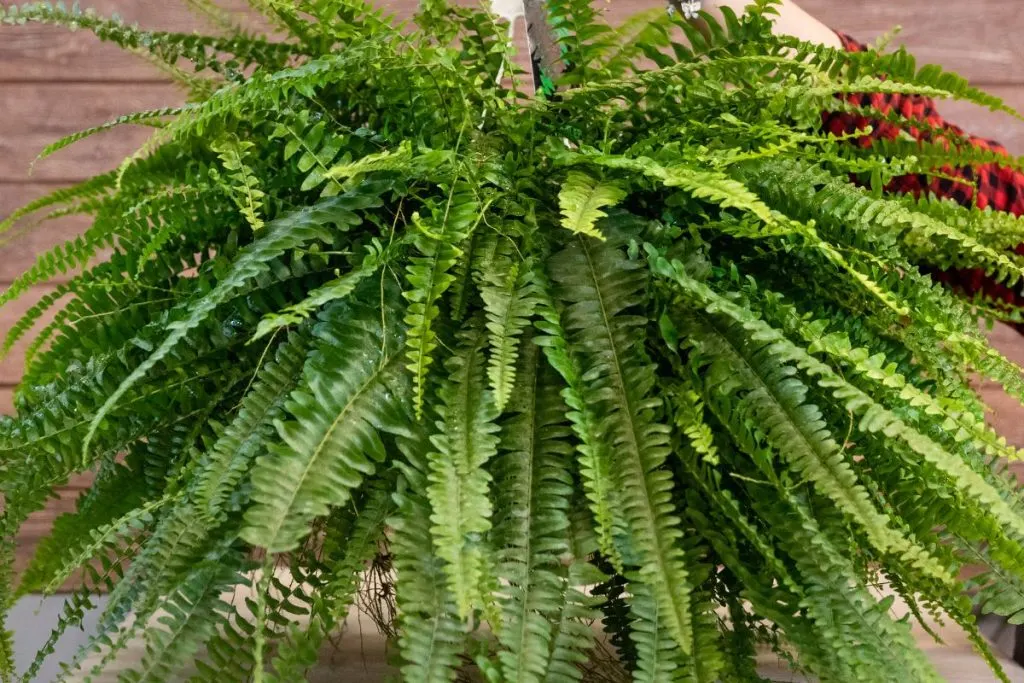
Ruffle ferns like abundant watering from early spring to late autumn – the soil is moistened twice a week because it dries the least.
In the wintertime of the year, water requirements are reduced, performing the procedure 1 time in 2 weeks.
During this period, daily spraying is sufficient to maintain the plant’s required moisture level. This plant just like many other plants doesn’t like cold water. Even when cleaning its leaves use lukewarm water.
However, just like most houseplants, excess moisture can cause leaves to rot and oh-oh, that’s never good!
Temperature Conditions For Your Fern
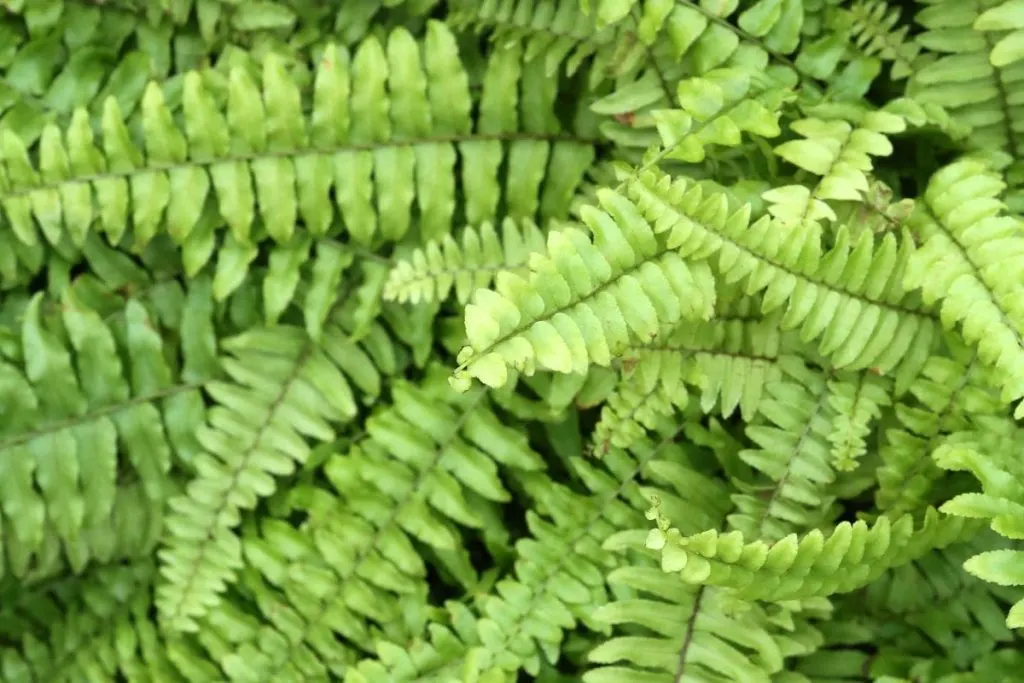
How to take care of fluffy ferns at home so that the plant does not die? It is necessary to ensure the optimal temperature. That is a temperature of 65-75 F.
In winter, the temperature should be at least 50 F. It is resistant to low temperatures. These plants can live even when the temperature drops to 45 F. Any type of fern does not need drafts but thrives well in the fresh air.
Indirect Light Or Direct Sunlight For Fluffly Fern?

In the house, ruffle fern will feel good in a dark place away from the central heating batteries. Sun benches are categorically contraindicated – it is better to place a pot with a large plant on the opposite side of the window. Indirect sunlight and low light are the best options for your ruffle fern.
Choose not a fully sunny window, west window should be fine. Of course, you can leave it for an hour in the morning on the east window because it needs its chlorophyll for active growth.
Pruning Ruffle Ferns

Fluffy ferns do not need seasonal pruning. A representative of the lichen family growing in the garden in the spring will “replace” the introduced leaves with new ones that will restore their former healthy appearance.
Of course, you can always prune it if you want to make a nicer shape out of its foliage. Since their fronds are upright fronds they can get pretty messy sometimes.
These feathery leaves deserve to look nice at any time of the year for sure. When pruning, use a sharp knife to better look at its soft ruffled fronds.
Propagate Fluffy Ruffle Fern Like This

This plant reproduces in several ways. It is possible to determine which of them is the simplest after a detailed consideration of each option. Below, we bring you a few ways in which this plant can be propagated.
– Propagation By Spores
In the conditions of home cultivation in autumn, the leaf is cut from the plant, cut out, and put to dry in a paper envelope.
In late January, the spores, which are a fine powder, are poured into prepared boxes with a mixture of soil, irrigated with a sprayer, and covered with thick glass.
After 2 months, green moss appears on the soil surface – this is the basis for future seedlings. During this period, remove the stand to allow access to oxygen.
By spring, the seedlings are ready and can be planted in other soils. This is the harder way and is rarely used, most prefer the easier alternative.
– Propagation By Dividing The Bushes
The easiest way to get a lot of planting material – divide the bush into separate parts. The developed and strong root system of the plant allows you to do it without damage to the main fern and prepare a lot of children’s elements for planting.
The procedure is carried out in early spring, after the end of frost, as soon as the thermometer constantly shows above 0.
Repotting Fluffy Ruffle Ferns
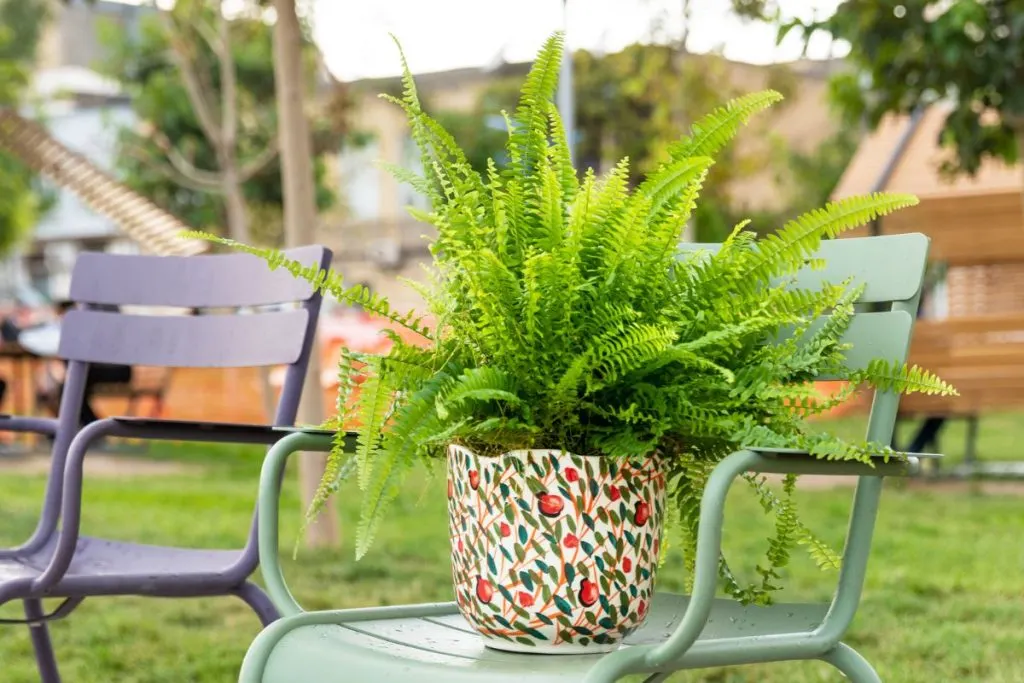
The plant rarely needs transplanting. This is suitable only in the case of planting adult, reinforced ferns in open ground for the warm summer period or if the pot in which it grows has become small for the overgrown root system.
This fern is transplanted into the garden in a deep hole, in a place shaded from the sunlight without drafts. All transplant work is carried out only in the spring when the plant enters the phase of active growth.
Too Much Fertilizer For This Plant Or?
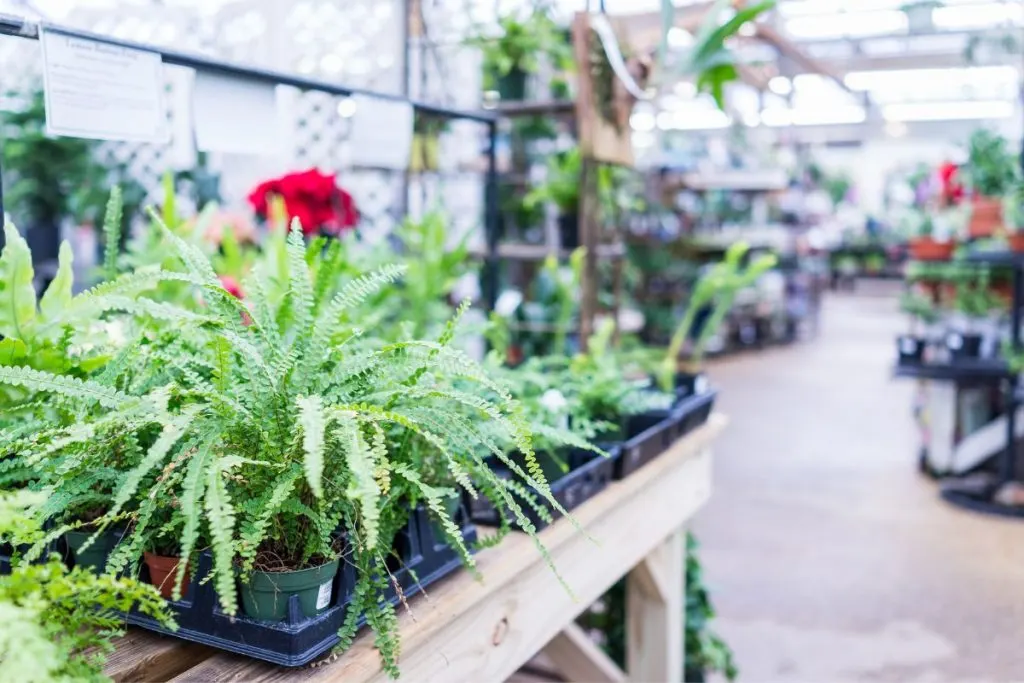
Fertilizer plants should be given only two to three times a year. Even then, the fertilizer should be applied only at half strength and given only during the spring and summer months.
Too much fertilizer will cause deformed leaves with brown or yellow spots or edges. If you’re wondering which fertilizer to use, use a regular houseplant fertilizer.
If you think that it’s lacking something after you fed it with a regular one, then try again with organic fish emulsion fertilizer. That will do it!
What Humidity Levels Does Your Fern Prefer?

The natural habitat of ferns is the jungle, ie tropical and subtropical areas, and despite the fact that it requires specific conditions to grow, flourish and survive, this delicate plant with proper care and attention can survive the harsh winter.
It needs a lot of humidity in the air, fluffy fern likes soggy air so it will be difficult to succeed in homes with central heating unless it is provided with moisture on a daily basis.
The biggest enemy of delicate ferns is dry air, which is difficult to avoid in the winter months due to heating.
Like any plant that grows naturally in the jungle, ferns require a lot of moisture, which is easiest to achieve by spraying it every day.
If you are wondering in which room the fern is best kept, the answer is very simple and logical – in the bathroom, where moisture and humidity are never lacking. However, the room where these flowers are should be ventilated often.
Learn More About Perfect Soil For A Fluffy Fern

After you bring Orlyak home, you should leave him in a shady place for a day. Then transplant into a pre-prepared spacious container with soil mixture. This fern likes soil evenly moist.
The planting substrate should consist mainly of sand. Peat moss is also great for a ruffle fern plant. Topsoil can be a good option for your fern too.
Ferns like well-drained soil, will not be comfortable in a clay environment, so broken bricks are often placed on the bottom of the pot.
Dig a deep hole in the pot (drainage hole) cover it with a thin layer of compost and carefully place the roots of the plant in the hollow. Water immediately after planting with special means, which will soften and speed up the adjustment.
Evergreen Boston Fern For Your Home
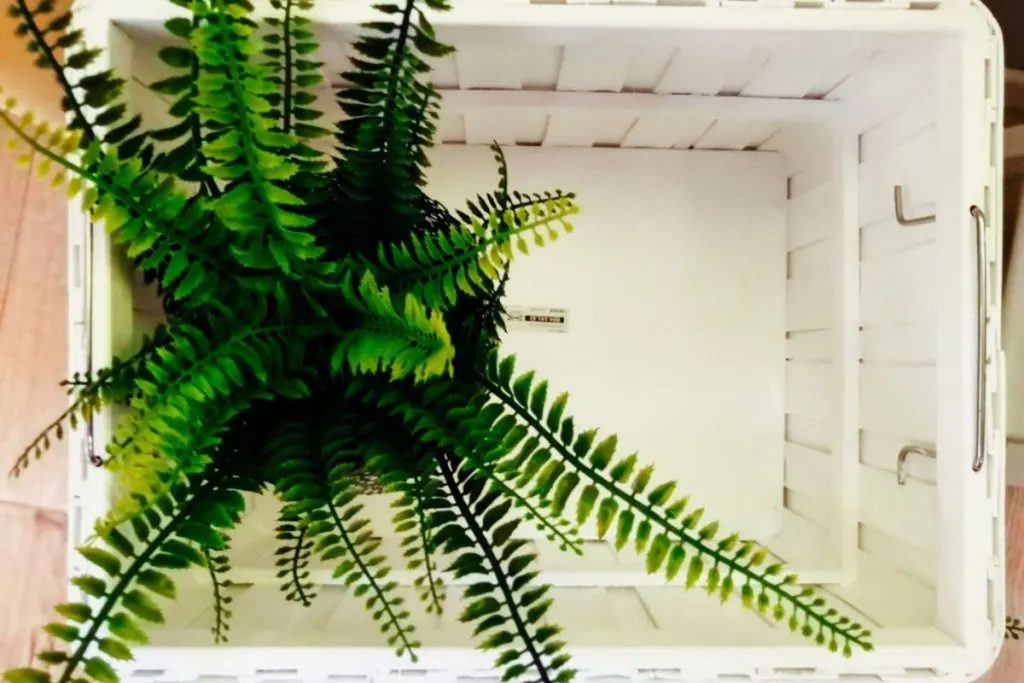
Another great fern example for your home is the Boston fern. They often call it an evergreen plant, because just like the Japanese fern it can create a relaxing aesthetic atmosphere for your home.
Nephrolepis exaltata is suitable for a place without direct sun, an ideal semi-bright place, and continuous moist soil. High humidity in the air suits them. In winter, if we keep it in a room with the central heating on, humidifying the air or spraying the plant is very important.
It is desirable to keep the lowest temperature above 50 F, otherwise, the leaves can start to dry very quickly, as well as the whole plant. Due to the high need for moisture, we can keep the plant in the bathroom. You can feed it every 2-3 weeks with mild liquid fertilizer.
It is propagated by cuttings that are created next to the parent plant, just separated from and transplanted to the desired location. The plant is possible to reproduce by dispersing the spores, although it is difficult.
It is transplanted when the pot grows, every 2-3 years with the addition of fresh compost. You can also search Florida ruffle which is an amazing variety of our lovely ruffle fern.
Fluffy ruffle fern: In Conclusion

If I could say one thing only after this article, it would be “congratulations.” Now, you know everything there is to know about fluffy ruffle ferns and their care guide.
This time tomorrow, you’ll be providing it with the best care there is. No need to thank us, thank you for reading our article, we sincerely hope we’ve been helpful.

